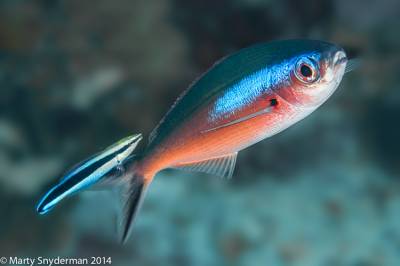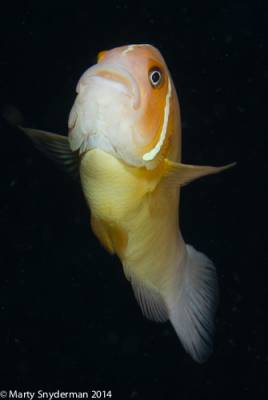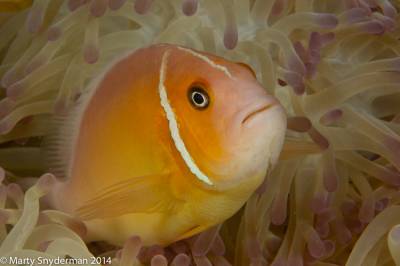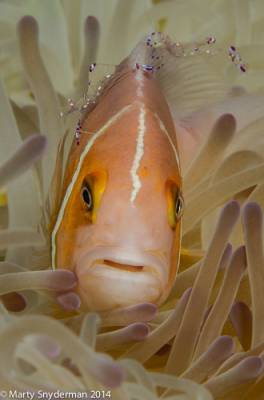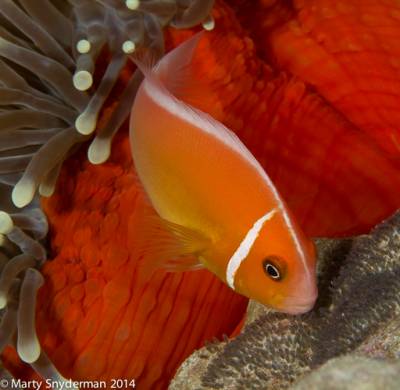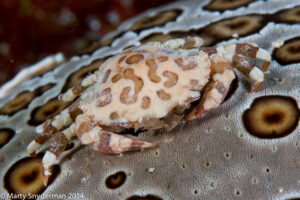
Hi Vivid-Pixers!
If you watch new underwater photographers as I have over the years, you would surely see that a significant percentage of them that try to take pictures of dozens of subjects on almost every dive. I often explain their style as “shooting at anything with gills”.
I get it. For a lot of us it is hard to know what subjects to photograph and how to get started. And there are so many wonderful subjects that we feel overwhelmed with the task of capturing images of every creature we see.
Early on in our pursuit of underwater photography this shoot at everything approach seems satisfying. But it usually doesn’t take very long for those that are even the slightest bit serious about improving their skills to realize this approach takes them on a path to producing mediocre images with their body of work failing to show improvement over time.
Realizing that they are failing to improve the quality of their images is when a lot of photographers begin to seek out a better approach.
At this point this piece could go in a lot of directions. I could discuss the many benefits are likely to be gained from taking courses, the advantages of using more sophisticated camera systems, and even the advantages of using re-breathers etc. But I want to suggest another idea. My suggestion is to photograph fewer subjects per dive, and “work your subjects”.
To get started with this approach means accepting the fact that, just like everyone else who has ever dived or ever will, you won’t be able to photograph every subject doing everything it ever does over the course of its life, in the perfect pose and the best ever water conditions in a single day, single trip, or even single lifetime. But what you can do is do your best to produce the best images you can given the subjects and conditions you have to work with on any given day.
My suggestion is to spend as much time as you need to find a subject you really want to photograph, and then once you find that subject, to settle down and “work it”. If you know the shot you want you might opt to “go for it” shortly after you see your subject. But in many other cases you will be better served by watching your subject for a few minutes before you start to shoot. I know it might feel like you are not taking advantage of all of your bottom time if you watch without shooting. But know this; a big part of what allows highly regarded photographers to consistently produce top quality images is that they know something about their subject. They have seen other images, read about or seen videos about their subjects, and they have probably spent some time watching, thinking, and playing that “chess game” with animals that allows them to capture an image that makes the rest of us sit up and take notice.
Quite often if you do spend a little time watching your subject you will discover that it is in the midst of some fascinating behavior. Consider the pink anemonefish photographs that follow. What caught my eye in the first place was the bright colors and colorful antics of the anemonefish. In years past, when I first began my own career, I would have likely created an image like this one. I probably would have been satisfied with my effort and moved on.
But in my opinion the photograph above fails to tell the story about where anemonefishes live- with their host anemones, and how anemonefishes are coated in a mucous covering that protects them from the otherwise potent stings of the anemone’s tentacles. The picture below helps to tell that story.
Keep watching and you might see what I did, an anemonefish being cleaned by a cleaner shrimp. I probably would not have captured that behavior if I had just shot a few photographs and moved on.
The same is true for this shot of a pink anemonefish that lives with yet another anemone. This fish is tending its eggs. How cool is that!
While I like the first photograph in this sequence of images, I think you will agree that the other images are progressively more interesting. All are the result of slowing down, watching my subject, and then trying to capture the story in front of me as opposed to employing a strategy of shooting as many subjects as possible on every dive.
I hope my thoughts and experience help you tell more interesting stories with your photography.
Marty Snyderman For the Vivid-Pix Gang
We hope that you’ve learned how to Take Better Pictures.
Click Here to receive a Free Trial of Vivid-Pix software and Make Better Pictures: www.vivid-pix.com

